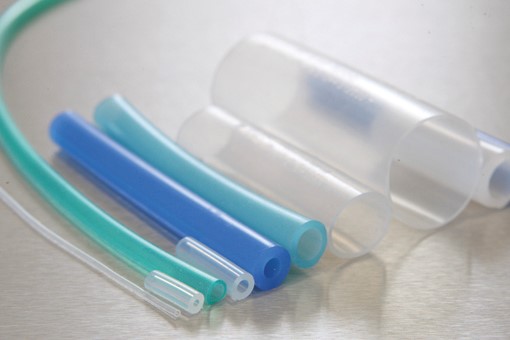Silicone is a material you might not associate with the field of medicine, but it’s a versatile polymer that appears in many places, from cooking utensils to makeup! Silicone has some unique properties that make it highly effective in more complex disciplines, namely medical technology. It can be used in intensive applications such as medical implants, reusable components and other mechanisms like surgical tools that offer strong reliability and durable performance.
Silicone is the popular choice for cable jackets and medical wire applications. Silicone of a medical grade is still the most common choice for coating of cables and wires for medical devices. The material is highly biocompatible and versatile.
![]()
The natural element of silicon was first discovered in the 19th century. Silicon forms the basis of the material that is silicone. It wasn’t until the 1940s that silicone became a commercial product, developed predominantly by Dow Corning and General Electric. Silicone offered such benefits as being highly resistant to temperature, environmental impact and electricity.
The main reason for silicone’s success is its ability to adapt itself to such a wide range of applications. Silicone has been applied in all the life sciences, in aerospace and defence, industrial and electrical fields since the 1960s.
In the field of medicine, silicone is used for a wide range of applications such as valves, tubing and implantable devices. It is also used in monitoring systems, diagnostic instruments and imaging tools. For a Silicone Hose Manufacturer, visit goodflexrubber.
There are strict regulations surrounding the biocompatibility requirements of silicone, which can prove costly in production, but the ingredients needed to make silicone are widely available and easy to assemble. This availability, ease of manipulation and high versatility combine to make it the obvious choice for manufacturing medical equipment and devices. When produced to medical-grade standards, silicone is biocompatible, hypoallergenic, strong and flexible.
![]()
Silicone has been used for enough years now to have proved its worth in medical applications, especially complex needs. The material has a high tolerance to repeated sterilization and stands up to the day-to-day wear and tear experienced in a hospital environment.
Other advantages include silicone’s ability to elongate, a particularly useful trait for applications such as device cables for cameras, robots, electrosurgical tools and power tools required in surgery. Silicone also offers
a look and feel that is more pleasant than some alternative materials and is a preferred choice with patients and medical professionals alike. Cables coated in silicone have a softness to them unlike other materials and are more supple, preventing irritation or tearing and making it easier for medical professionals to dress wounds.



